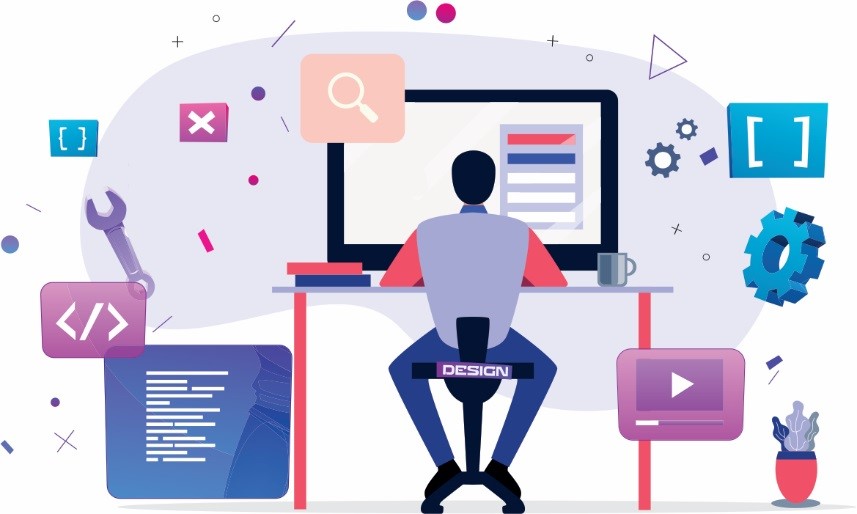Discovering the Ideal Software Development Partner for Innovative Solutions
Discovering the Ideal Software Development Partner for Innovative Solutions
Blog Article
Dedicated Developers vs. In-House Teams: Which Is Right for You?
The choice in between using devoted programmers and preserving an internal team is a considerable one that can affect the trajectory of your jobs and total company approach. Conversely, internal groups add to a cohesive business society and a nuanced understanding of lasting goals.
Comprehending Committed Developers
The growing need for specialized abilities in the tech industry has led to the introduction of dedicated programmers as a feasible solution for many organizations. These experts are typically acquired on a job basis, enabling business to utilize details knowledge without the long-lasting dedication related to permanent hires. Committed developers are often embedded within a client's team, supplying adaptability and scalability to fulfill task requirements.
This model allows companies to access an international ability swimming pool, which is specifically advantageous in a quickly progressing technical landscape. Devoted designers can be sourced from different geographical locations, guaranteeing that companies can find the right skill established at affordable rates. They commonly bring a riches of experience and knowledge, having actually serviced diverse projects throughout various markets.
Furthermore, committed developers can concentrate solely on the tasks at hand, boosting efficiency and effectiveness. They are geared up to incorporate flawlessly into existing workflows, teaming up carefully with in-house groups to accomplish job objectives. This approach not just lowers the problem of recruitment and training yet likewise allows companies to remain dexterous, adapting promptly to altering market needs and technological innovations.
Advantages of In-House Teams

In addition, internal groups tend to have a much deeper understanding of the business's objective, worths, and objectives. This alignment can improve employee engagement and inspiration, as team members feel much more attached to their job and the company's success. Furthermore, having a devoted in-house group permits far better positioning of methods and objectives, as these members are continually concentrated on the company's concerns.
Internal groups likewise help with quicker decision-making processes, as they can react more quickly to obstacles and adjustments. The recognized relationships and experience with firm procedures enable streamlined workflows and minimized miscommunication. Ultimately, the combination of a natural society, placement with business goals, and effective communication makes in-house groups a valuable asset for numerous companies, particularly those seeking to cultivate long-lasting growth and development.
Cost Factors To Consider
When evaluating expense factors to consider, both devoted developers and in-house groups existing distinctive financial effects for organizations. Engaging committed designers generally entails a pay-per-project or hourly price model, which can be cost-efficient for companies with fluctuating job needs. This technique permits adaptability in scaling resources up or down, making certain that companies only pay for the solutions they need.
On the other hand, in-house teams require taken care of prices, consisting of wages, benefits, and overhead costs such as workplace and devices. While this design uses higher control and immediate schedule of sources, it may lead to higher lasting costs, particularly if the workload does not justify a full time staff.
Additionally, firms need to think about the hidden prices connected with employment and training of in-house employees, which can further stress budgets. Sometimes, the moment and resources spent on handling an in-house team can take away from the see this website company's core business purposes.

Task Administration and Versatility
Job monitoring and versatility are critical factors that affect the selection between committed programmers and in-house groups. Devoted developers generally use a high level of adaptability, enabling companies to range sources up or down based on task needs. This dexterity can be especially beneficial for companies experiencing front end developer rising and fall work or those seeking to introduce rapidly. Devoted teams often have developed procedures for taking care of tasks efficiently, leveraging details methodologies like Agile or Scrum, which assist in iterative development and flexibility.

Eventually, the choice between committed designers and internal groups depends upon the desired level of adaptability and the specific job monitoring requirements. Business have to evaluate their functional dynamics, job intricacy, and source availability to figure out which alternative aligns finest with their calculated purposes.
Making the Right Choice
Picking the ideal advancement technique-- internal teams or dedicated programmers-- needs a cautious assessment of numerous aspects that line up with a company's strategic objectives. On the other hand, in-house groups can supply better connection and combination with existing personnel.
Following, assess your budget. Committed designers typically offer a cost-effective solution for short-term tasks, while in-house groups may incur greater lasting expenses as a result of incomes, advantages, and overhead prices. Evaluate the degree of control and partnership wanted; in-house groups usually foster more powerful communication and positioning with company culture.
If prompt outcomes are necessary, devoted designers can be onboarded quickly, whereas developing an internal group takes time for employment and training. If constant advancement is crucial, spending in an internal team may generate better returns over time.
Verdict
In conclusion, the choice between in-house teams and committed developers hinges on task requirements and business purposes. Conversely, internal groups cultivate a cohesive society and much deeper alignment with long-lasting objectives.
The choice between using specialized developers and maintaining an in-house group is a significant one that web design packages can impact the trajectory of your jobs and total business technique.Job monitoring and flexibility are vital factors that affect the choice between committed developers and in-house teams. nearshore software development.In comparison, internal groups might succeed in keeping a regular task monitoring structure due to their familiarity with the company's culture and long-term goals. Devoted programmers usually present a cost-effective service for short-term projects, while internal groups might sustain higher long-term expenses due to wages, advantages, and expenses costs.In conclusion, the decision in between internal teams and dedicated developers pivots on task demands and organizational objectives
Report this page